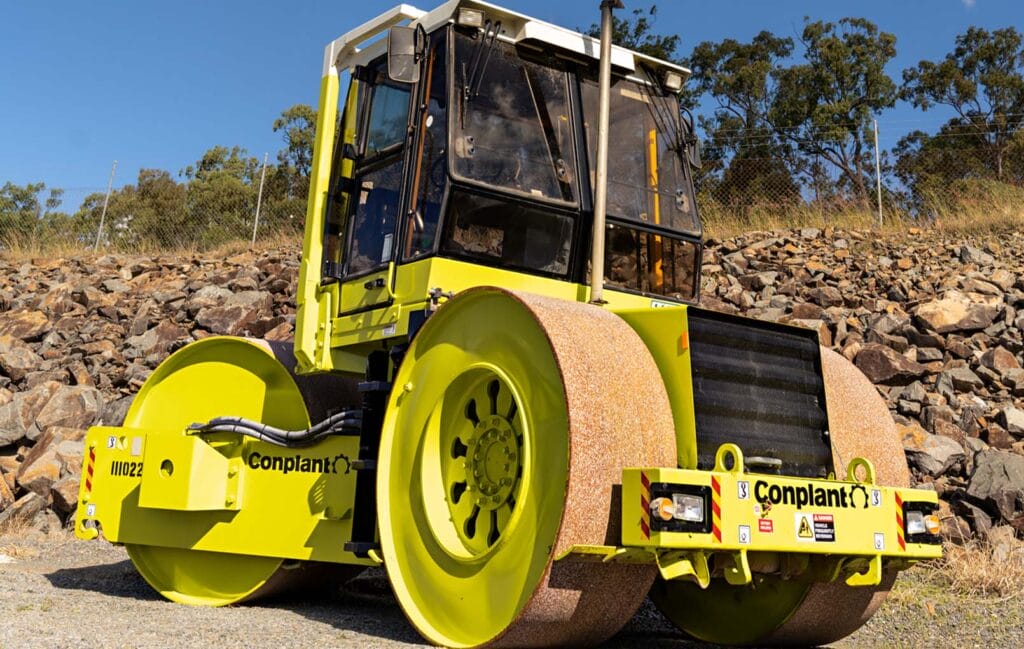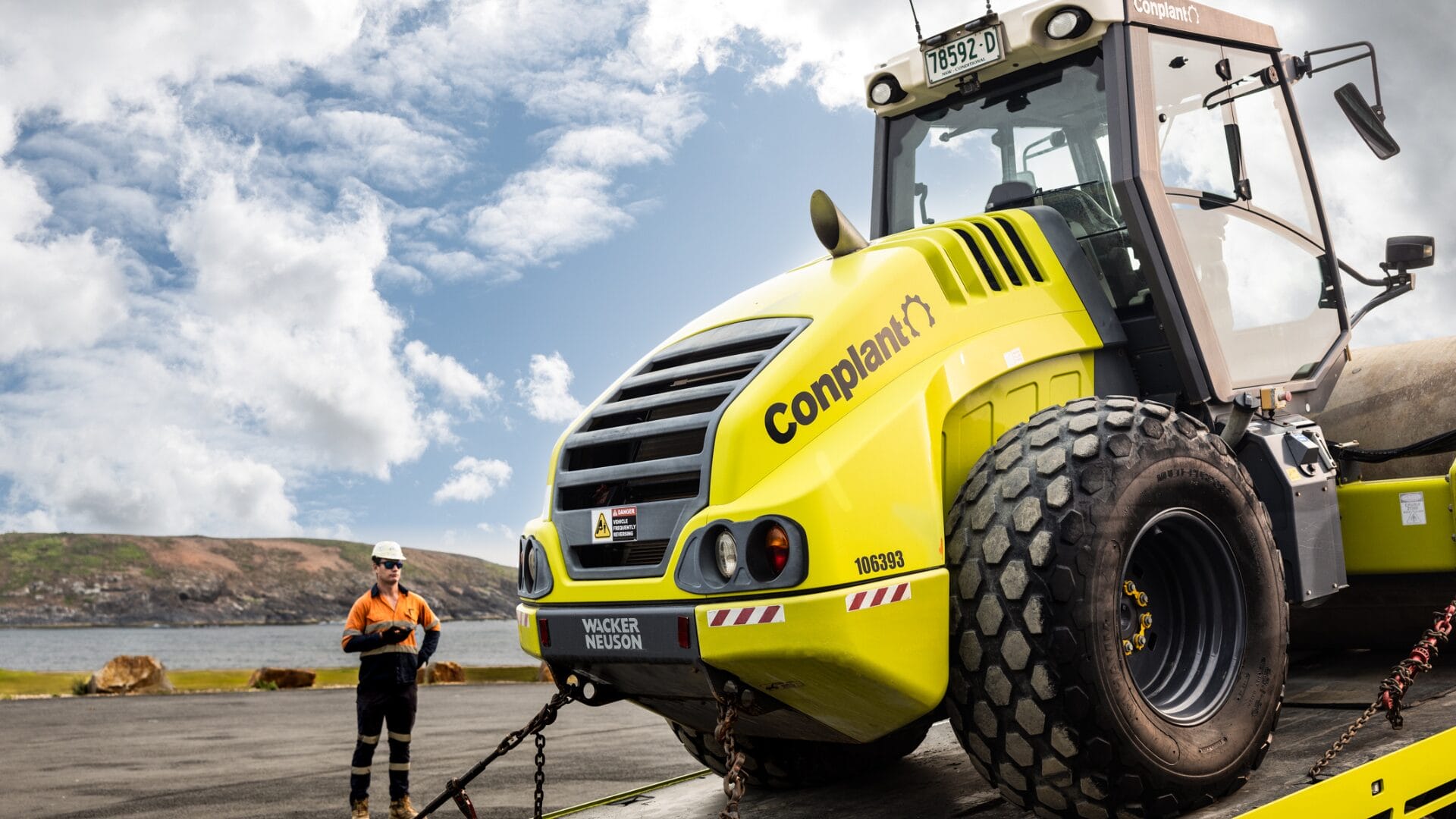Minimise On Site Vibration with a Static Three Point Roller
There are some Australian worksites where vibratory rollers simply can’t be used — yet high compaction efficiency is still essential. These typically include areas near high-rise buildings, on or near bridges, and alongside railways where vibration can pose a structural or safety risk.
A Static Three Point Roller offers an ideal low-vibration compaction solution. It delivers the pressure and density required for quality results without the risks associated with vibratory equipment.
Three Point Rollers have traditionally been used for asphalt and soil compaction, particularly for thin, granular or semi-cohesive soil layers. They are also commonly used for proof rolling and are often paired with a multi-tyred roller for a smoother, more refined finish.

Why Choose a Static Three Point Roller?
Static three point rollers offer strong compaction performance while keeping vibration to a minimum. They are cost-effective, easy to operate and compatible with tractor-mounted applications in some configurations. Unlike vibratory rollers, which rely on oscillating force, three point rollers compact using weight and kneading pressure — making them safer near sensitive structures.
They also produce an exceptionally smooth finish, making them ideal during the final stages of asphalt or soil preparation.
What Is a Three Point Roller?
A Three Point Roller is a static compaction machine featuring either two or three large drums arranged to distribute weight evenly across the soil. The machine compacts material through linear pressure and a kneading motion rather than vibration, making it ideal for locations that restrict vibratory equipment.
A static three point roller is designed to compact soil and asphalt layers by applying continuous, uniform weight across multiple drums. Key features include:
- Two or three steel compaction drums
- A central or articulated steering mechanism
- A control panel for steering, braking and compaction pressure
- Heavy frame design for improved linear load and compaction depth
Typical specifications vary, but most three point rollers deliver substantial dead weight, wide drum coverage and excellent pressure distribution.
How does a Three Point Roller compact?
These rollers compact the ground through a kneading motion, as well as through pressure (as opposed to vibration). The static rolling used by these machines relies upon the weight of the unit and the overall liner load — in other words, they compact the ground through weight.
Historically, three point rollers were built in both two-drum and three-drum configurations. The traditional setup included two large driven drums at the rear and a smaller, steerable drum at the front.
Modern models now include configurations with three large driven drums of equal diameter, as well as articulated steering for improved maneuverability and surface accuracy.
The Static Three Point Roller compacts various soil types into a flat foundation, ensuring the final surface can be laid accurately and smoothly.

Ideal locations for a Three Point Roller
All civil construction sites have machinery best suited to their conditions — and the Three Point Roller excels in low-vibration zones.
Because these rollers apply pressure instead of vibration, they’re ideal for use:
- In night works
- Near high-rise buildings
- On or near bridges
- Above essential underground services
- Around historic structures and heritage sites
Our customers also deploy static rollers when traditional vibratory methods raise objections — such as when projects require:
- Increased load-bearing capacity
- Reduced air void content
- Improved surface rideability
- Resistance to rutting and cracking
- As well as an increased life cycle cost (including a reduction in ongoing maintenance)
Assessing Site Suitability
Before selecting a three point roller, consider the soil profile, surface strength and site engineering requirements. Some environments may require approval from project engineers or compliance with Safe Work Australia guidelines, especially where vibration restrictions are enforced.

What type of soil can be compacted with static rollers?
As well as location dependency, different types of soil will require compacting by different machinery, mostly depending on the type of soil, but factors like the air temperature can also come into play.
Static rollers work best on:
- Well-graded sand
- Gravel
- Crushed rock
- Asphalt (25–50 mm thickness)
They tend to be used to finish the upper surface of the soil (as opposed to being used for the compaction of uniform sands), as well as the compaction of asphalt from 25 to 50mm thickness. They are best used on soils that don’t require a lot of pressure to achieve compaction.
If you want an even better finish, drag brooms can be attached to correct surface inconsistencies while the roller applies pressure to the soil.
Static rollers also ensure asphalt layers are compacted without vibration, reducing the risk of cracking or over-working delicate mixes.

Choosing the Right Three Point Roller for Your Project
Factors to Consider
When selecting a three-point roller, consider:
- Project size and compaction depth required
- Soil type and moisture content
- Drum size and roller weight
- Compatibility with tractors or towing systems if required
The heavier the linear load, the greater the compaction force — so machine size should match the intended lift thickness and material composition.
Renting vs Buying
Renting is ideal for short-term projects or occasional use, while purchasing makes sense for contractors who work regularly in vibration-sensitive environments. Cost, storage and maintenance expectations should also factor into the decision.
Conclusion
The Static Three Point Roller is a proven solution for sites where vibration must be minimised. Whether you’re working near buildings, on bridges or above critical infrastructure, it delivers reliable compaction without risk to surrounding structures.
With more than 1000 rollers available to hire, Conplant can match the right machine to your civil or road construction project.
Need help choosing the right compaction roller? Call 1300 166 166 or visit your nearest branch — our team is here to help.



